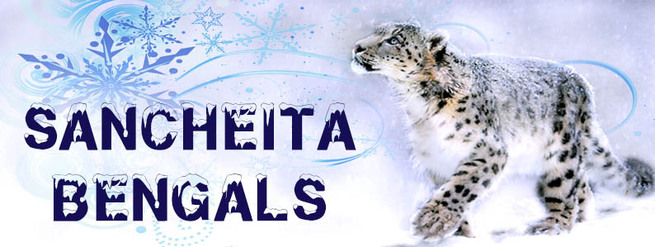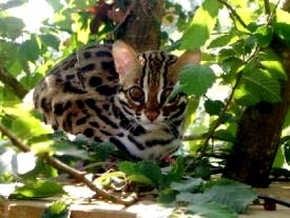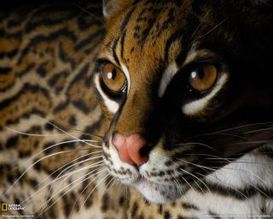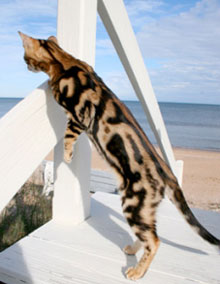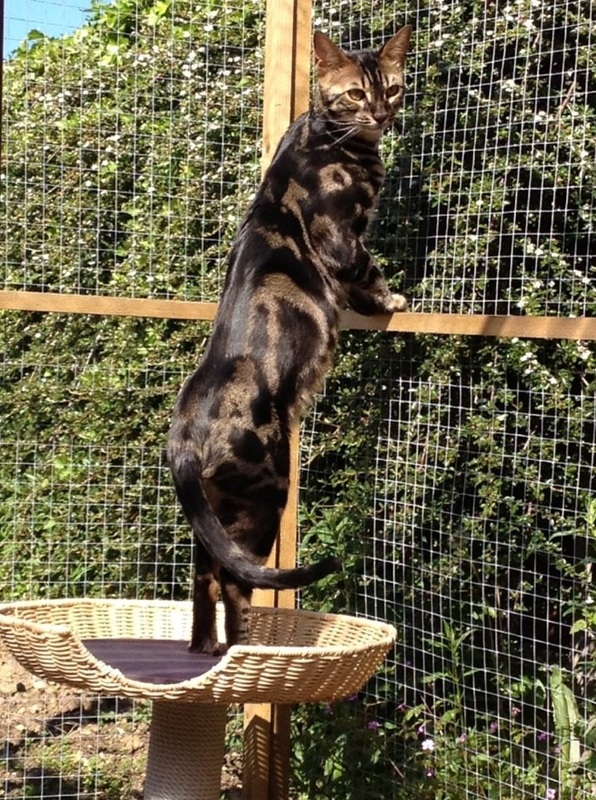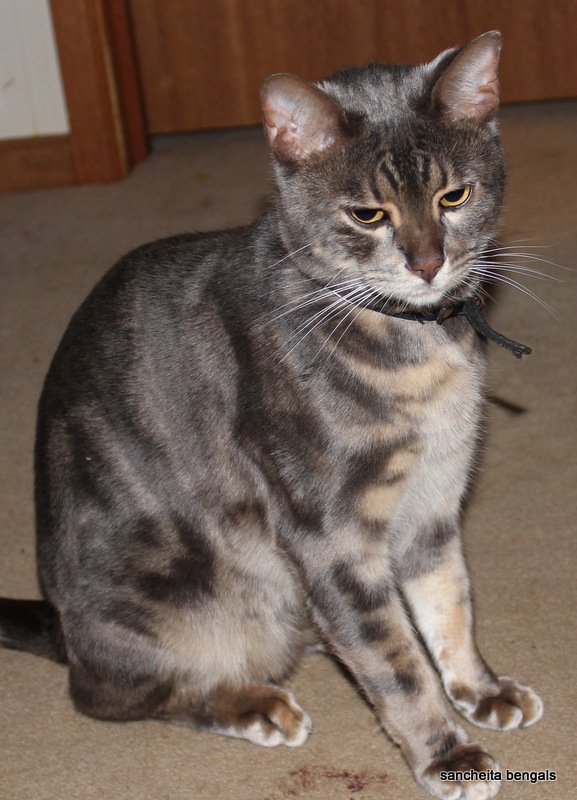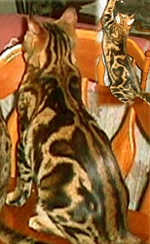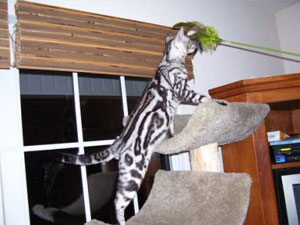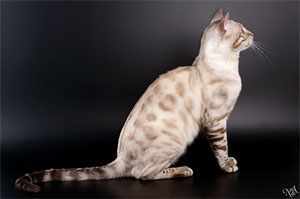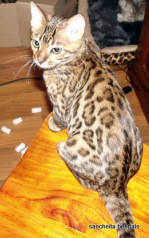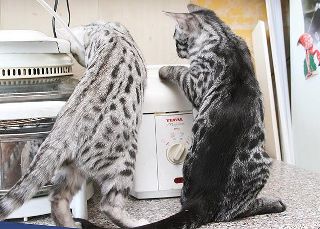The Bengal Cat
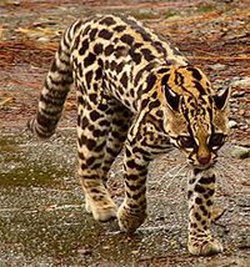
The first Bengal cats were bred by Mrs. Jean Mills in 1983 in the USA.
Jean developed the basis for a breed which has a gentle, friendly & beautiful temperament.
She also wanted the Bengal cat to have the looks of the small wild forest cats, with patterns of the Ocelot & Margay.
With this in mind, Bengal breeders are achieving an even
closer appearance to the Wildcat!
Jean developed the basis for a breed which has a gentle, friendly & beautiful temperament.
She also wanted the Bengal cat to have the looks of the small wild forest cats, with patterns of the Ocelot & Margay.
With this in mind, Bengal breeders are achieving an even
closer appearance to the Wildcat!
Bengal cat breed History and Background
The Bengal breed is singular in the cat fancy as the only successful pairing of a wild cat with a domestic cat. There is some anecdotal evidence that pairings of the Asian leopard cat with domestic cats had been attempted prior to the 1960s, but the real genesis of the Bengal breed began in earnest in the 1970s, when amateur breeder Jean Sudgen, of California, became the recipient of a group of cats that had been bred for use in genetic testing. Dr. Willard Centerwall of Loyola University had been testing Asian Leopards for their partial immunity to feline leukemia, and began cross breeding them with domestic cats for possible genetic viability in immunization development.
Rather than destroy the cats after the program was completed, Dr. Centerwall searched for appropriate homes for his cats. Because Ms. Sudgen had an actual interest in breeding Asian leopard hybrids, she chose not to take all of the cats, instead focusing on those cats that were showing a predilection for domestic temperament along with the desired spotting patterns.
For her part, Ms. Sudgen had begun her first experiments in cat hybridization while studying genetics at UC Davis in the 1940s. When presented with the opportunity to work with Dr. Centerwall's Asian leopards and their hybrids, she took to it with enthusiasm, and although Dr. Centerwall was fully supportive of Ms. Sudgen's endeavors, the same could not be said for the cat fancy community back then.
Ms. Sudgen, who had by now remarried and taken the name Mill, had been cautioned that the offspring of her crossings would be sterile, and this did prove true for the males that resulted from the matings, but she had better luck with the female hybrids. Before she could fully immerse herself in her new breeding program, however, Ms. Mill needed an appropriate male cat to cross with her female Asian leopard hybrids. Feeling that neither the Egyptian Mau, Burmese or Abyssinian pure breeds were genetically strong enough, she opened her net wider, and in 1982, her patience paid off when a curator for the New Delhi Zoo, in India, pointed her to a leopard-like street cat that was living on its own in the rhinoceros' exhibit at the zoo. Although the cat was feral, it proved to be an excellent mate for her hybrid females, and within years Ms. Mill had her successful, though still fledgling, breeding program well underway.
The first three generations, from the original pairing of an Asian leopard hybrid to a domestic, until the birthing of the fourth generation, are considered to be the “foundation" cats (generations are technically referred to as F1, F2, F3, F4...and so on). While these F1-F3 cats are considered by their breeders to be safe and suitable as pets, they are not allowed into competition. They are simply the foundation upon which the "healthy" purebred Bengal is built. By the fourth generation, only Bengal to Bengal pairings are allowed, and the cat is then considered to be a pure breed. The Asian leopard is characteristically a reclusive, solitary, omnivorous hunter, and these wilder traits need to be bred out so that the final outcome is a house and people friendly feline companion.
Once the Bengal cat has reached the fifth generation stage, the breed exceeds expectations in friendliness, affection, and gentility, and has been the recipient of numerous show awards world wide.
The Bengal Cat Breed
The Bengal cat has considerable variations in its markings - most commonly, arrows, spots, rosettes & marble.
Bengal Cats are a medium to large sized cat; a male can weigh as much as 11kg & a female around 4-6kg.
The modern Bengal gene pool contains gene sources from a variety of breeds, mainly Egyptian Maus, American Shorthairs, Abyssinian, Ocicats & Domestic Shorthairs.
Although most Bengal Cats are simply classed as "brown" there is quite a variation within the standard. "Browns" can be any shade of brown, Sandy, Grey, Golden, Deep Red, Charcoal & so on.
Another unique characteristic of the Bengal is that some individuals have a glitter affect over their fur, as if having been sprinkled with Gold or Diamond dust. This particular trait is highly desirable in the Bengal.
Some other variants of the Bengal coat colours include, 'Snows', 'Silvers' & Silver Charcoals'. Patterns of Spotted/Rosetted & Marble.
Bengal Cats are very active & athletic and enjoy being up high, so an owner would benefit from providing a tall climbing - scratching pole. Bengals also have a natural affinity for playing with or in water. So don't be surprised to find them in your shower or bath, & helping with the washing up!
The Bengal cat is not a pet for people that want a lazy cat. Bengals are active, lively & playful and may even enjoy a game of fetch! They also can be taught to walk on a harness & lead quite easily.
Bengals have all the charm, personality & are highly intelligent. They are also known to quite talkative at times and will delight in being right under your feet just to be with you!
Bengals should have wonderful temperaments & fabulous personalities. A bonus with a Bengal cat,
is that they only shed their hair off twice a year, not all year like any other cats would.
Bengals cats interact very well with other pets & children. They become real family members.
Some information credited to http://www.petmd.com/cat/breeds/c_ct_bengal
"Below are just a few examples of the spectacular colours & patterns that you can get in a Bengal cat."
